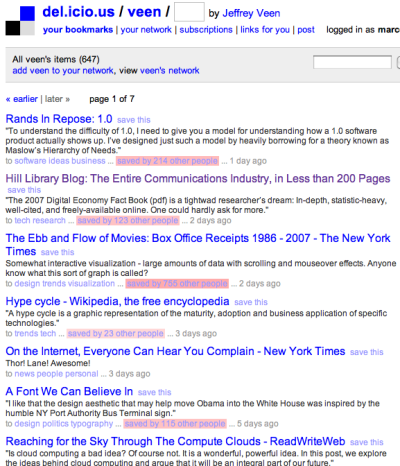
Pedagogical Possibility #2: Kiss those Reading Quizzes Goodbye
Another feature of del.icio.us is the ability to subscribe to other users' feeds. By default, all user information is public. If you visit a user's page, you can see his or her links, tags, and notes. You can also see who else is in his or her network. On the user's page, you'll see an "add this user to your network" option at the top. Should you choose to add a user to your network, then all of his or her posts will feed to "your network" page. This presents us with the possibility of seeing what others are reading.
Last semester, I taught an introductory composition course that focused on the blogging and social authorship. Every student in the class and I joined a network, making it possible for me to see everything they were posting. Since I am not a big fan of reading quizzes, this provides me with an alternate (and far more interesting) method for tracking what my students are reading. I will admit that this wasn't an integral part of my last course (since students were blogging three posts a week, I generally kept track of their reading through their posts). As in past semesters, a few students became converts who keep active and productive accounts. Regardless, I think you could use this feature, along with the "note" field, as a convenient and more engaging way of tracking student reading (but, again, be sure to learn why the "note" function makes my list of "the-most-frustrating-things-ever").
Up next: Pedagogical Possibility #3.